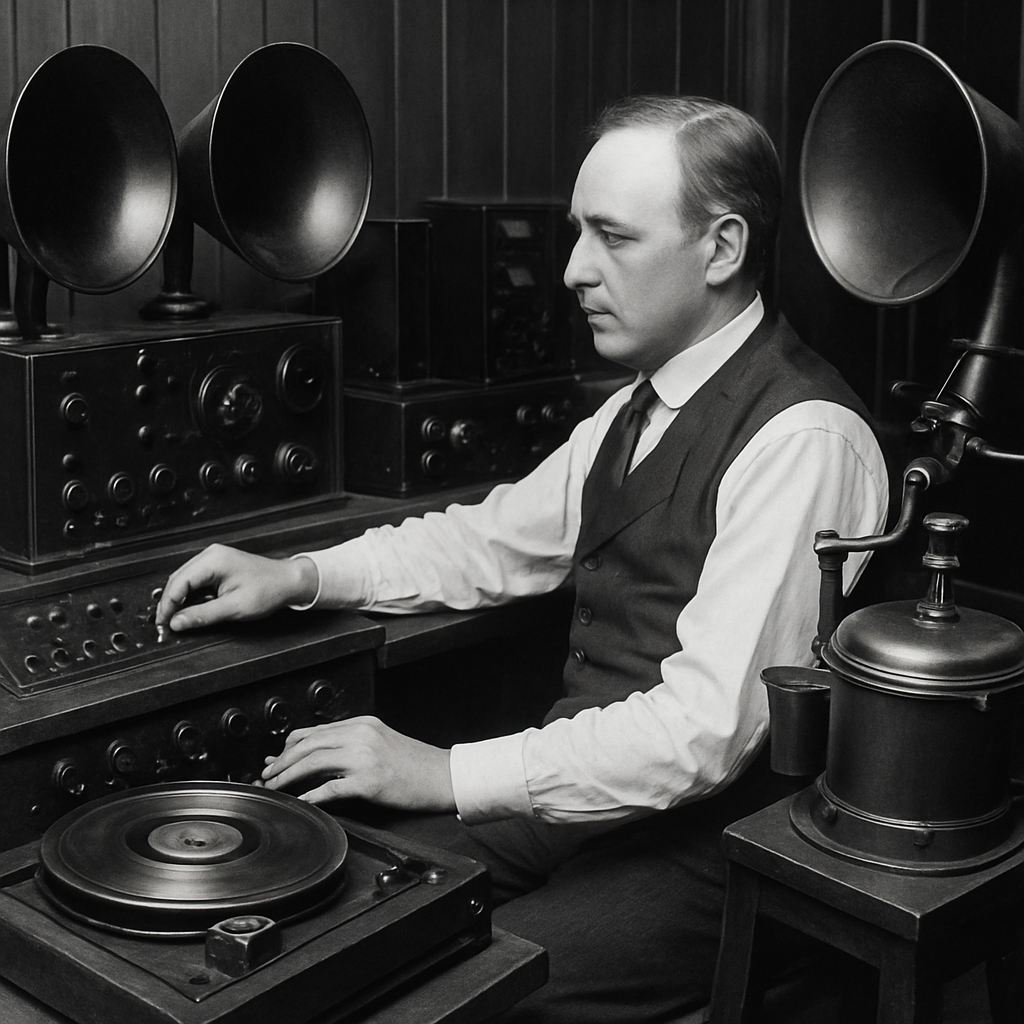The History of Mastering – From Tool to Art Form

The History of the Mastering Process: From Practical Tool to Art Form
1. The Early Days of Mastering
The mastering process has its roots in the early days of vinyl production. In the early 1900s, when the first records became popular, mastering was a pragmatic and technical process. The main goal was not just to produce the best possible sound, but also to consider the technical limitations of the medium being used, whether it was vinyl, tape, or later, digital formats. During this time, engineers focused on transferring the best available sound sources to a physical medium. Noise, distortion, and clipping were minimized, while maximizing loudness without introducing too much distortion.
2. Mastering in the 1950s and 1960s: The Transition to a Standard Process
With the advent of multi-track recording and stereo sound in the 1950s, the mastering process began to evolve. Engineers began to refine and improve not just the loudness, but also the frequency balance and stereo image. The first cutting interfaces for vinyl production were developed, allowing music to be tailored to the physical constraints of vinyl, tape, and later, CDs. In the 1960s, legendary mastering engineers like Bob Ludwig and George Marino took the mastering process to a new level, making it more than just a technical job – it became a creative art that shaped the final sound of albums.
3. The Digital Revolution in the 1980s
The introduction of digital technology in the 1980s dramatically changed the mastering process. The CD format increasingly replaced vinyl, which presented new challenges. The need for data handling, avoiding clipping, and compression became more important. With the 16-bit resolution and 44.1 kHz sampling rate, a new era of mastering began. The digital age also introduced tools like Pro Tools, WaveLab, and Logic Pro, enabling mastering engineers to perform non-destructive editing with precise control over the audio. Compressors, equalizers, and limiters became essential tools for mastering.
4. The Mastering Process Today: Art Meets Pragmatism
Today, mastering is a process that balances both technical and artistic considerations. The core task of mastering remains to polish and optimize the sound for the target medium – be it streaming, vinyl, CD, or digital distribution. The loudness, frequency balance, tone, and dynamics are finely adjusted to ensure that the track sounds its best in any listening environment.
Pragmatism in Mastering
In many cases, the primary focus of modern mastering is the technical fine-tuning. The mastering engineer ensures that the track is delivered in the correct format and loudness for platforms like Spotify, Apple Music, and Tidal, adhering to their loudness standards and technical guidelines. This also involves ensuring that the track meets true peak limits and is compatible across different playback systems.
Mastering as an Art Form
Mastering is more than just pragmatic – it has become an art form. It’s not only about technical precision, but also about shaping the final sound of the track. The use of analog compressors, tube-based devices, and special tools that add "color" and warmth to the sound is an important part of the creative process. Many techno and house producers consider the mastering process the final artistic step in their music, giving their track the final polish and emotional resonance needed to complete the release. It’s about enhancing the energy, refining small details, and transferring the feeling to the whole project.
Conclusion
The mastering process has evolved from a technical tool in early recording technology to a creative art today. Especially in electronic music, mastering is no longer just pragmatic but a key artistic expression that shapes the final sound and emotional depth of the song.
FAQ
When did mastering begin?
Mastering began in the early 1900s with vinyl production, focusing on minimizing noise and distortion while maximizing loudness.
How did mastering evolve in the 1950s and 1960s?
The introduction of multi-track recording and stereo allowed engineers to refine loudness, frequency balance, and stereo image, transforming mastering into a creative art.
What changed during the digital revolution of the 1980s?
Digital technology introduced CDs, data handling, clipping control, and tools like Pro Tools, WaveLab, and Logic Pro for precise, non-destructive mastering.
What is modern mastering today?
Modern mastering balances technical fine-tuning (formats, loudness, true peaks) with artistic decisions like tone, depth, and emotional resonance.
Why is mastering considered an art form?
It shapes the final sound and emotional impact of a track, adding polish, warmth, and energy, especially in electronic music genres like techno and house.
About the Co-Author
CB MASTERING – partner in crime at NexaTunes Blog
📧 cbmastering@gmx.de · 🔗 linktr.ee/cb.mastering
